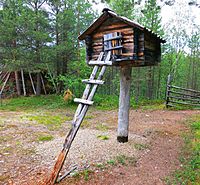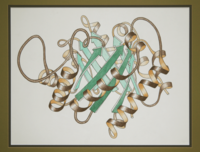Structure facts for kids

Structure is a fundamental concept in science. It means the arrangement of parts. Everything we know has structure. Some examples of things that have structure are buildings, machines, rocks, minerals, organs in a body, sentences, music, society, and data.
Types of structure
Physical structure
In engineering and architecture, a structure is something that can support loads. Physical structures can be natural (like rock formations, skeletons, and salt domes) or man-made (like buildings, bridges, and machines).
Biological structure
In biology, structures are usually arranged from smallest to largest, with larger parts being made of many smaller parts put together. In order, these structures are atomic and molecular, cellular, tissue, organ, organismic, population, and ecosystem levels.
Chemical structure
Chemical structure refers to the shape and way atoms are arranged in a molecule. The structural formula of a chemical compound is shown as a picture showing how the atoms are arranged in that particular compound. A protein structure is the three-dimensional coordinates of the atoms within (macro) molecules made of protein.
Musical composition
Music is an art form consisting of sound (different pitches) and silence expressed through time. The term musical form, a type of structure, refers to two related concepts:
- the type of composition (for example, a musical work can have the form of a symphony, a concerto, or other generic type)
- the structure of a particular piece (for example, a piece can be written in binary form, sonata form, as a fugue, etc.)
Social structure
Social structure is how people organize and relate to others within the same institutions. Roles have different levels of power within these institutions so that society can function in an organized way. For instance, in the institution of family, there are the roles of husband, wife, father, mother, son, brother, daughter, sister, etc. Other examples of institutions that make up social structure are nations, schools, religious organizations, and business organizations.
Data structure
In computer science, a data structure is a way of organizing and storing data in a computer so that it can be found and used efficiently. Different data are stored in different ways, depending upon what the information is and how it will be used. Two main classifications of data structure are linear (in order) and non-linear (not in order, like a tree with branches).
-
A traditional Sami food storage structure
-
A motif from the Preludes by Chopin, Op. 28 no.6, bars 1–3
Related pages
- Structural engineering
- For structuralism, see Claude Lévi-Strauss
See also
 In Spanish: Estructura para niños
In Spanish: Estructura para niños



